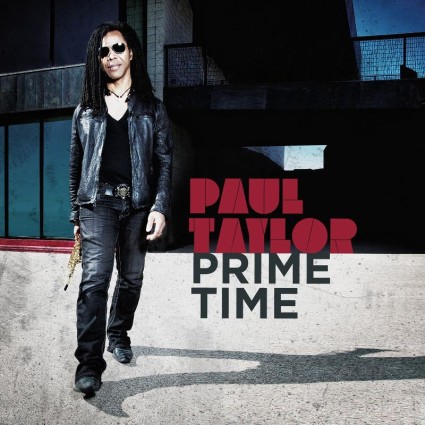Paul Taylor | Prime Time
Paul Taylor | Prime Time
by Brent Faulkner
Smooth jazz is a jazz sub-genre that allows for plenty of possibilities, maybe the most possibilities for the producer. On saxophonist Paul Taylor’s 2011 effort Prime Time, the production possibilities do run wild, but also leaves room for even more exploration. Overall, Prime Time is a pleasant smooth jazz album that yearns to be even more passion-laden from the perspective of songwriting and production. Taylor always shines through the material -valedictory or merely average – attesting to his beautiful saxophone tone.
“Push To Start” opens the album solidly, with surprising percussive drum programming and synthesized production. “Push to Start’s” ‘canvas’ is an interesting one for Taylor to paint his lovely saxophone tone upon, but a canvas that yearns for ‘ever the slightest bit more.’ It lacks a certain edge which may have purported Taylor even higher as a musician (he’s a vet already). That said, “Push to Start” is pleasant, though not ‘earth-shattering.’ “Moment of Truth” has more ‘star-power’ with production work reminiscent of Grover Washington Jr.’s production work on his lauded 1980 album Winelight. Sure, Taylor never eclipses the artistry of Washington (not many could), but he sounds polished, refined, and relevant here, more so than the opener. “Don’t Wanna Let You Go” finds Taylor honing in on his saxophone talents once more, but the cut itself is overly predictable. The cut sounds like a hip-hop cut production-wise, but there is a bit too much looping occurring and ‘same-y’ ideas make the listener weary after its four and a half minute duration. A point of interest? Subtle, hushed background vocals chant throughout the cut: “Don’t Wanna Let You Go.”
“Can’t Nobody” may be the albums most rousing number, featuring a superb vocal performance by Jamie Jones. As always, Taylor’s saxophone playing is ‘on-point’. Equally worth of note, the production work is the best of the entire album with guitars, organs, and of course Taylor’s sax. It is a bit of an oddity as far as placement, but who says smooth jazz can’t have an urban-crossover edge? “Horizon” is a bit of a bore, which is unfortunate. A juggernaut at over five minutes, the main issue with “Horizon” is its subdued production work, which takes away from Taylor’s sax work. A highlight, however, is the use of background vocals singing neutral “oohs.” The spirited “Laronda” helps redirect any laxness, featuring inherent tropical influence care of percussion and brass synths. The background vocals grow a bit repetitive, which is a drawback.
“Say No More” is another strong showing on Prime Time. Here, Taylor’s saxophone tone is lovely as ever and the slower tempo of the cut proves a smart contrast. The use of acoustic guitars and string patches within the production is brilliant and proves a capable support to Taylor’s plaintive alto playing. “Space” features vocals once more, this time the performer a female, who does a solid job. The highlight of “Space” may be Taylor’s doubling of the vocal lines on saxophone. “Prime Time,” the title track is not a bad cut featuring great production work with a strong, soulful quality. Taylor’s playing works well in tandem with the production, particular the harmonized saxophone parts. The break section with sax and percussive groove is one of the strongest points of the entire album. Closing cut “Use Somebody” is appropriately placed. It may be the slightest bit sleepy, but it is a pleasant cover of the Kings of Leon cut. Taylor’s treatment is a nice interpretation.
Overall, Prime Time is an enjoyable album though not absent of flaws. At times, one yearns for ‘more’ from the production and some of the material. With even stronger backgrounds, one can only imagine how much more Taylor may have been lifted. That said, how much ‘lifting’ does a vet of this caliber need? Taylor has a splendid tone on saxophone and affirms his musicianship each and every time he picks up that horn. Prime Time confirms this.
Brent Faulkner
The Urban Music Scene
